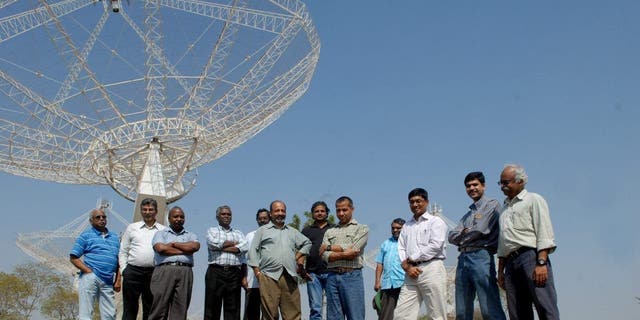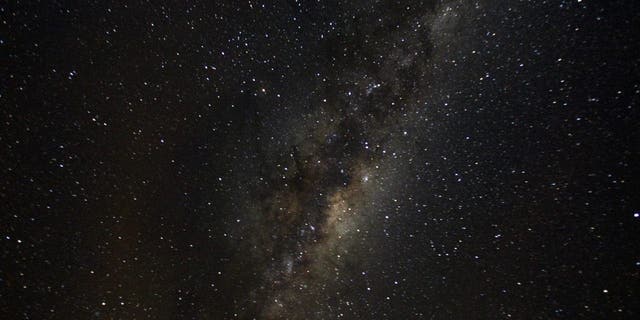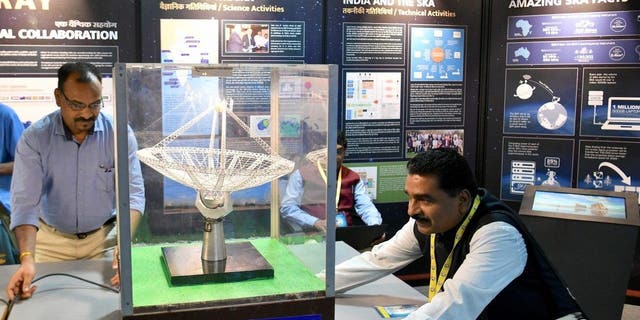A radio signal 9 billion light-years away from Earth has been captured in a record-breaking recording, Space.com said Friday.
The signal was detected by a unique wavelength known as a “21-centimeter line” or the “hydrogen line,” which is reportedly emitted by neutral hydrogen atoms.
The signal captured by the Giant Metrewave Radio Telescope in India could mean that scientists can start investigating the formation of some of the earliest stars and galaxies, the report said.

Scientists involved in the GMRT upgradation project.
(Hemant Mishra/Mint via Getty Images)
HOW TO WATCH THE ‘GREEN COMET’ AS IT MAKES CLOSEST APPROACH IN 50K YEARS
Researchers detected the signal from a “star-forming galaxy” titled SDSSJ0826+5630, which was emitted when the 13.8 billion-year-old Milky Way – the galaxy where Earth resides – was just 4.9 billion years old.
“It’s the equivalent to a look-back in time of 8.8 billion years,” author and McGill University Department of Physics post-doctoral cosmologist Arnab Chakraborty said in a statement this week.

A view of the Milky Way from an area of Puyehue National Park near Osorno City, Chile, May 8, 2008.
(REUTERS/Ivan Alvarado)
MORE THAN 3 BILLION STARS, GALAXIES ARE CAPTURED IN A MASSIVE NEW SURVEY
Galaxies reportedly emit light across a wide range of radio wavelengths. But until recently, 21-cm-wavelength radio waves had only been recorded from galaxies nearby.
“A galaxy emits different kinds of radio signals. Until now, it’s only been possible to capture this particular signal from a galaxy nearby, limiting our knowledge to those galaxies closer to Earth,” Chakraborty said.

An exhibitor arranges a scaled-down model of Giant Metrewave Radio Telescope (GMRT) Antenna on display during ‘Vigyan Samagam,’ a multi-venue mega-science exhibition, at the Visveswaraya Industrial and Technological Museum in Bangalore on July 29, 2019.
(MANJUNATH KIRAN/AFP via Getty Images)
CLICK HERE TO GET THE FOX NEWS APP
The signal allowed astronomers to measure the galaxy’s gas content and therefore find the galaxy’s mass.
This determination has led scientists to conclude that this far-off galaxy is double the mass of the stars visible from Earth, the report said.
